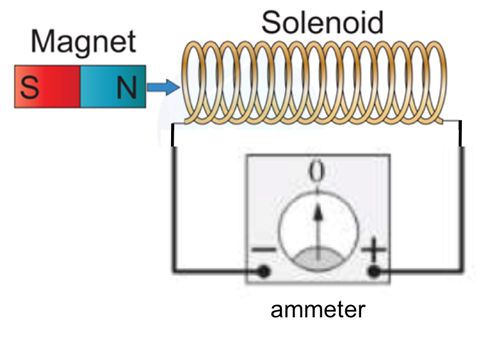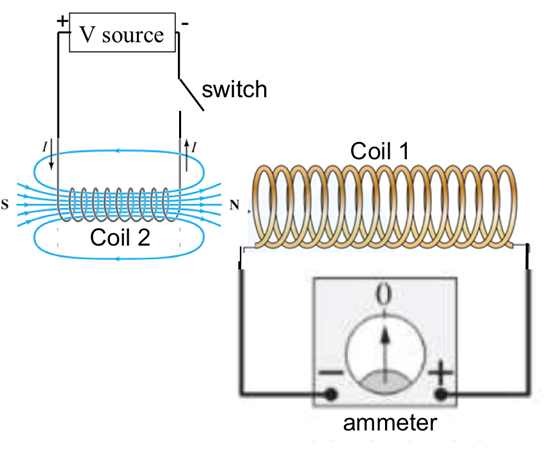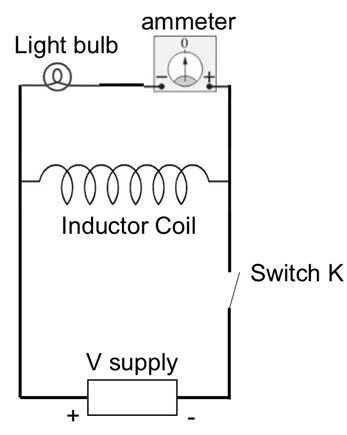Inductance
Overview
Source: Yong P. Chen, PhD, Department of Physics & Astronomy, College of Science, Purdue University, West Lafayette, IN
This experiment will use inductive coils to demonstrate the concept of inductor and inductance. Magnetic induction will be demonstrated using a rod magnet inserted into or extracted away from the core of a coil to induce a transient electromotive force (emf) voltage in the coil, measured by a voltmeter. This experiment will also demonstrate the mutual inductance between two coils, where turning on or off a current flowing in a coil can induce an emf voltage in a second coil nearby. Finally, the experiment will demonstrate the self-inductance of a coil, when switching a current off induces an emf to light up a light bulb connected in parallel with the coil.
Procedure
1. Magnetic Induction
- Obtain a solenoid coil (with a hollow core) and a rod magnet (with its North and South poles labeled).
- Obtain an analogue bipolar ammeter with an indicator needle. The needle is nominally at the middle position at zero reading, and will deflect to the right or left depending on the direction of current flow (positive reading means the current flows from the positive terminal to and negative terminal inside the ammeter).
- Connect the two ends of the solenoid to the "
Results
Representative results for what may be observed on the ammeter reading for Sections 1 and 2 (setups in Figures 1 and 2) are summarized in Tables 1 and 2 below.
| Procedure Step | Orientation of Rod Magnet | Motion of Magnet | Reading on the ammeter |
| 1.4 | South-North (North isApplication and SummaryIn this experiment, we have demonstrated how changing a magnetic field (by moving a magnet) induces a current in a coil, and also how changing the current in the coil induces current in another coil (mutual induction). We also demonstrated that changing the current in a coil induces a voltage and current in the same coil (self-induction). Inductors (typically in the form of coils) are commonly used in many circuit applications, such as to store magnetic energy when a steady state current flows TagsSkip to... Videos from this collection:  Now Playing InductancePhysics II 21.5K Views  Electric FieldsPhysics II 77.4K Views  Electric PotentialPhysics II 104.5K Views  Magnetic FieldsPhysics II 33.4K Views  Electric Charge in a Magnetic FieldPhysics II 33.7K Views  Investigation Ohm's Law for Ohmic and Nonohmic ConductorsPhysics II 26.2K Views  Series and Parallel ResistorsPhysics II 33.1K Views  CapacitancePhysics II 43.7K Views  RC/RL/LC CircuitsPhysics II 142.8K Views  SemiconductorsPhysics II 29.8K Views  Photoelectric EffectPhysics II 32.6K Views  Reflection and RefractionPhysics II 36.0K Views  Interference and DiffractionPhysics II 91.0K Views  Standing WavesPhysics II 49.7K Views  Sound Waves and Doppler ShiftPhysics II 23.4K Views Copyright © 2025 MyJoVE Corporation. All rights reserved |


